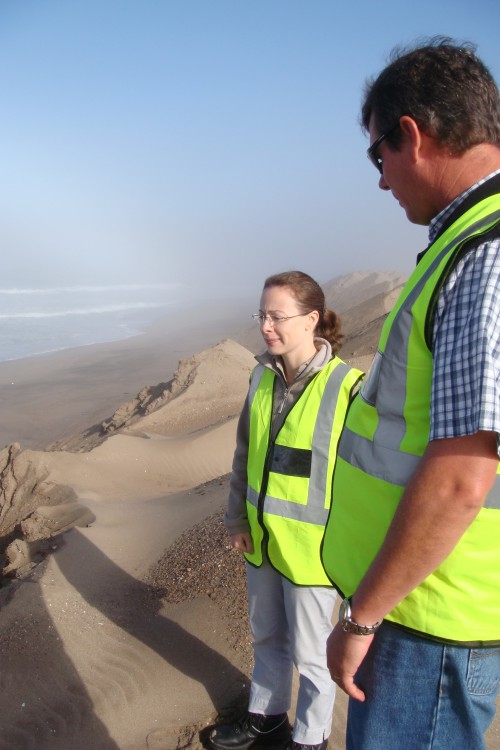
As well as being rich in minerals and boasting some of the most spectacular landscapes in Africa (if not the world), Namibia can also claim to be the site of some extraordinary archaeological finds.
During my recent familiarisation trip to the south of the country, I had the opportunity to visit one of these special sites in Oranjemund: the wreck of a 16th century Portuguese trading vessel, complete with a rich cargo of gold, silver, ivory and copper.
The wreck was discovered in 2008 by De Beers NAMDEB diamond miners working on the beaches of the south Namibia near the mouth of the Orange River on the country’s border with South Africa.
NAMDEB dredges the sand on the expansive beaches to recover alluvial diamonds deposited there after being carried down the river from as far away as the Drakensburg Mountains of South Africa.
During their mining operations, they discovered cannons, copper ingots, pieces of wood and anchors, leading NAMDEB to contact the local heritage authorities. Subsequent excavations produced a large amount of gold, silver and copper alloy coins; elephant ivory tusks; tons of copper, lead, pewter and tin ingots; kitchenware; cannons, muskets and swords; navigational equipment and medical equipment.
Some of the copper ingots were inscribed with the Fugger family crest, a prominent family from Augsburg, Germany who were invested in the Portuguese shipping trade. Dates on the coins date back to 1525.
Although the ship itself was badly destroyed, researchers examining the remaining planks suggest that the ship was a nau, a large, strong ship used by the Portuguese on their India Routes, which had been buried in sand for more than 500 years.
Ten anchors, all of cast iron, were discovered within the excavations. Three astrolabes and a brass compass gimbal were recovered from site outside Oranjemund. Many of the archaeological remains recovered in this spectacular haul have never been seen in finds elsewhere, making it one of the richest historical maritime discoveries in the world.
I was lucky enough to see the remains, which are currently being examined and stored on NAMDEB premises, whilst plans are being made to build a regional museum to house them. The exact location of this museum remains the subject of some local debate. Given that many of the 60,000 British nationals who travel to Namibia each year are likely to be interested in this unique discovery – I intend to remain in close touch with the company and local heritage authorities as plans shape up to make it accessible to the public.
As soon as it becomes clearer where it will be permanently housed and displayed, I will update our UKinNamibia Facebook and make sure it is added to the itineraries of the many UK tour operators who recommend interesting routes around this beautiful land. It is a sight well worth seeing.
